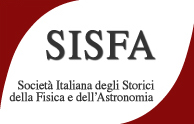Speaker
Description
Previous scholars all studied symmetries according to classical logic; yet, the same word “sym-metry”, coming from the Greek “συμμετρία” = “measuring together”, means measuring according to a modality; hence, this word belongs to modal logic. In its turn modal logic is equivalent through its S4 model to intuitionist logic (Hughes and Cresswell 1996, pp. 224ff.), where the double negation law fails. As a fact, the subject of symmetries is unwarily treated through many doubly negations (e.g. the word in-variants, stressed by Leibniz (1692) and L. Carnot at the origin of the symmetries in physics; plus equivalence (= not-unequal), in-difference and ambiguity) or doubly negated propositions whose corresponding affirmative ones lack of evidence. The use of intuitionist logic introduces to a kind of theoretical organization which is different from the deductive-axiomatic organization: a problem-based one, aimed at discovering a new scientific method capable of solving the given problem. The model of the new kind of organization has been recently discovered by a comparative analysis of all past theories suggested by the respective authors in a non deductive-axiomatic way (Drago 2012). Pierre Curie’s paper (1984) is investigated under the light of these novelties. Its main propositions all are doubly negated propositions of intuitionist logic. However his theory results to be a mixture of features of both models of a theory; this ambiguity explains the difficulties met by scholars in analyzing this paper. A rational re-construction of Curie’s paper according to the model of a problem-based theory is performed.

